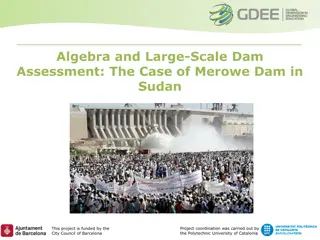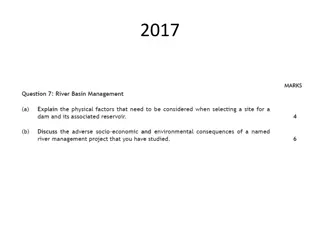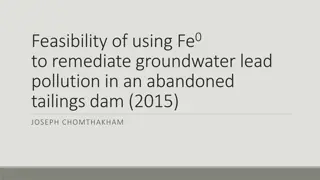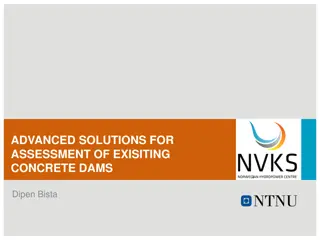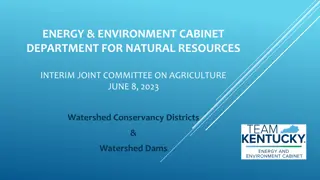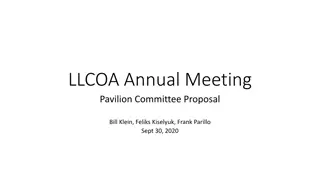
Enhancing Day-Ahead Market Efficiency Through Ancillary Service Demand Curves
Explore the implementation of Ancillary Service Demand Curves in the Day-Ahead Market to improve efficiency and pricing strategies. Learn about setting MCPCs when offers are insufficient and refining the procurement process for AS capacity.
Download Presentation

Please find below an Image/Link to download the presentation.
The content on the website is provided AS IS for your information and personal use only. It may not be sold, licensed, or shared on other websites without obtaining consent from the author. If you encounter any issues during the download, it is possible that the publisher has removed the file from their server.
You are allowed to download the files provided on this website for personal or commercial use, subject to the condition that they are used lawfully. All files are the property of their respective owners.
The content on the website is provided AS IS for your information and personal use only. It may not be sold, licensed, or shared on other websites without obtaining consent from the author.
E N D
Presentation Transcript
Key Principle 5 Day-Ahead Market Carrie Bivens August 27, 2019
Introduction Since the PUCT has provided direction on the scope of DAM changes to consider for RTC, it is appropriate for the task force to go ahead and move forward with discussions on three items from Key Principle 5 on the tracking spreadsheet: Ancillary Service Demand Curves (ASDCs) in the DAM; Changes to the current DAM AS insufficiency process; and Impacts on AS Obligation process for Load-Serving Entities (LSEs) if ASDCs in the DAM 2 PUBLIC
Current AS Plan Procurement In current DAM implementation, the last MW of each Ancillary Service is just as important to the optimization as the first AS Plan is modeled as constraints with very high penalty costs This is analogous to having vertical AS demand functions, and the optimization will take any necessary step to procure every single MW in the AS plan. Example of OD 2/6/13: DAM cleared $3k prices for all AS for Hour 1 due to a shortage in available Non-Spin offers. A small quantity, 4.4 MWs, was struck at $3k and set the clearing price. 3 PUBLIC
Setting MCPCs when Insufficient In the current implementation, if DAM does not have sufficient offers to clear the entire AS plan: First, it will use the DAM optimization penalty costs for purposes of prioritizing each of the Ancillary Services and ensuring that any resource necessary to provide the service would be available to Unit Commitment Reg-Up and Reg-Dn = $3M RRS = $2M Non-Spin = $1M Then, if the penalty costs end up setting any of the MCPCs, the DAM operator will do a pricing run prior to publishing The pricing run relaxes the AS constraint such that the penalty costs are removed from the published MCPCs. Protocol reference: Section 4.5.2, Ancillary Service Insufficiency 4 PUBLIC
ASDCs in DAM Under RTC, prices will be established for each AS that reflect the lost reserve value in the case of a shortage in real-time. If an AS shortage exists in DAM, large or small, then ASDCs should determine how much clears and at what price, rather than the current process. Refines the quantity of procurement to reflect the fact that the first MW is more valuable than the last Clearing prices become more reflective of the actual scarcity Outcomes should be consistent with real-time. Helps ensure that DAM will continue to be the primary source for forward procurement of AS capacity, rather than relying on RUC, by aligning the day-ahead and real-time Therefore, DAM should use the same ASDCs as SCED. 5 PUBLIC
Simplified Examples DAM example with no ASDC (current implementation) when short AS (illustrative only) All examples here are simplified with only one AS product, no energy offer shortage, no resource or transmission constraints, no curves RRS Plan = 50 MW MW 200 100 45 150 Price $125 $30 $40 $50 Energy Bid G1 energy offer G1 RRS offer G2 energy offer Awards G1 energy G2 energy G1 RRS MW 55 145 45 Prices System lambda MCPC $50 $60* * reflects $20 opportunity cost of energy for G1 6 PUBLIC
Simplified Examples DAM example with basic ASDC when short AS (illustrative only) RRS Plan = 50 MW RRS Demand Curve MW 200 100 45 150 Price $125 $30 $40 $50 300 Energy Bid G1 energy offer G1 RRS offer G2 energy offer 250 200 Price ($/MWh) 150 100 10 20 30 40 50 Awards G1 energy G2 energy G1 RRS MW 55 145 45 Prices System lambda MCPC RRS (MW) $50 $100* * reflects RRS demand curve price 7 PUBLIC
Simplified Examples DAM example with basic ASDC when offer is higher than lowest portion of ASDC (illustrative only) RRS Plan = 50 MW RRS Demand Curve MW 200 100 45 150 Price $125 $30 $120 $50 300 Energy Bid G1 energy offer G1 RRS offer G2 energy offer 250 200 Price ($/MWh) 150 100 10 20 30 40 50 Awards G1 energy G2 energy G1 RRS MW 60 140 40** Prices System lambda MCPC RRS (MW) $50 $140* * reflects $20 opportunity cost of energy for G1 ** Constrained by RRS demand curve 8 PUBLIC
AS Obligation Changes Ancillary Services Obligation will continue to be published by 6 am in the day-ahead. This will become an advisory number based on the AS Plan It will be used for Self-Arranged AS transaction validation (e.g., for RRS when determining allowable UFR MWs per QSE.) Minimum AS Obligation quantity will be 0.1 MW. After DAM is complete, an updated AS Obligation will be published based on actual AS procurement quantities, if different. With ASDCS in DAM, fewer MWs could be procured than the AS Plan for any service, and more MWs could be procured for any service with a curve that extends past the AS Plan quantity. ERCOT will use this updated quantity for DAM AS settlement for QSEs with load ratio shares. 9 PUBLIC
Draft Key Principle Concepts KP5 ASDCs will be added to the DAM optimization. The same ASDCs in SCED will be used in DAM. Eliminate the current DAM AS insufficiency process Remove process of reopening submission window for more offers Remove current pricing run AS Obligation quantities will be updated for settlement based on actual DAM AS quantities procured, if different from the AS Plan quantities. 10 PUBLIC
Additional Discussion Open question Due to the fact that there is no power balance penalty curve in DAM (Energy Bids provide a similar function when energy is scarce), does the offer cap for DAM need to be different than real-time? 11 PUBLIC
Questions? PUBLIC


